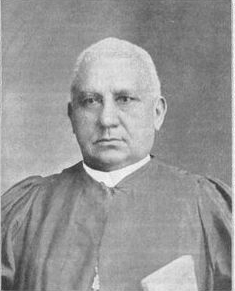Civil rights movement (1865–1896)
== Civil Rights Movement (1865–1896) ==
The Civil Rights Movement (1865–1896) was a period of significant social and political change in the United States, following the end of the American Civil War and the abolition of slavery with the Thirteenth Amendment. This era, often referred to as the Reconstruction era, saw efforts to secure civil rights for African Americans and to integrate them into American society as full citizens.
Background[edit | edit source]
The end of the Civil War in 1865 marked the beginning of the Reconstruction era. The Emancipation Proclamation and the Thirteenth Amendment had abolished slavery, but the status and rights of the newly freed African Americans were far from secure. The federal government, under the leadership of President Abraham Lincoln and later President Andrew Johnson, sought to rebuild the South and integrate African Americans into society.
Key Legislation[edit | edit source]
Several key pieces of legislation were passed during this period to protect the rights of African Americans:
- The Civil Rights Act of 1866: This act declared that all persons born in the United States were citizens, regardless of race, color, or previous condition of servitude.
- The Fourteenth Amendment: Ratified in 1868, it granted citizenship to all persons born or naturalized in the United States and provided equal protection under the law.
- The Fifteenth Amendment: Ratified in 1870, it prohibited the federal and state governments from denying a citizen the right to vote based on race, color, or previous condition of servitude.
Organizations and Leaders[edit | edit source]
Several organizations and leaders emerged during this period to advocate for civil rights:
- The Freedmen's Bureau: Established in 1865, it provided assistance to freed slaves and poor whites in the South.
- NAACP: Although founded later in 1909, its roots can be traced back to the efforts of civil rights activists during this period.
- Frederick Douglass: A former slave and prominent abolitionist, Douglass continued to advocate for civil rights during Reconstruction.
- Booker T. Washington: An influential African American leader who promoted education and economic self-reliance.
Challenges and Opposition[edit | edit source]
Despite these advancements, African Americans faced significant challenges and opposition:
- Black Codes: Southern states enacted these laws to restrict the freedom of African Americans and force them into labor contracts.
- Ku Klux Klan: This white supremacist organization used violence and intimidation to oppose civil rights efforts.
- Jim Crow laws: These laws, enacted in the late 19th century, enforced racial segregation and disenfranchised African Americans.
End of Reconstruction[edit | edit source]
The end of Reconstruction in 1877, marked by the Compromise of 1877, led to the withdrawal of federal troops from the South and the end of federal efforts to protect the rights of African Americans. This period saw the rise of Jim Crow laws and the institutionalization of racial segregation, which would not be effectively challenged until the Civil Rights Movement of the mid-20th century.
Related Pages[edit | edit source]
- American Civil War
- Reconstruction era
- Thirteenth Amendment to the United States Constitution
- Fourteenth Amendment to the United States Constitution
- Fifteenth Amendment to the United States Constitution
- Freedmen's Bureau
- Ku Klux Klan
- Jim Crow laws
- Civil Rights Movement
Search WikiMD
Ad.Tired of being Overweight? Try W8MD's physician weight loss program.
Semaglutide (Ozempic / Wegovy and Tirzepatide (Mounjaro / Zepbound) available.
Advertise on WikiMD
|
WikiMD's Wellness Encyclopedia |
| Let Food Be Thy Medicine Medicine Thy Food - Hippocrates |
Translate this page: - East Asian
中文,
日本,
한국어,
South Asian
हिन्दी,
தமிழ்,
తెలుగు,
Urdu,
ಕನ್ನಡ,
Southeast Asian
Indonesian,
Vietnamese,
Thai,
မြန်မာဘာသာ,
বাংলা
European
español,
Deutsch,
français,
Greek,
português do Brasil,
polski,
română,
русский,
Nederlands,
norsk,
svenska,
suomi,
Italian
Middle Eastern & African
عربى,
Turkish,
Persian,
Hebrew,
Afrikaans,
isiZulu,
Kiswahili,
Other
Bulgarian,
Hungarian,
Czech,
Swedish,
മലയാളം,
मराठी,
ਪੰਜਾਬੀ,
ગુજરાતી,
Portuguese,
Ukrainian
Medical Disclaimer: WikiMD is not a substitute for professional medical advice. The information on WikiMD is provided as an information resource only, may be incorrect, outdated or misleading, and is not to be used or relied on for any diagnostic or treatment purposes. Please consult your health care provider before making any healthcare decisions or for guidance about a specific medical condition. WikiMD expressly disclaims responsibility, and shall have no liability, for any damages, loss, injury, or liability whatsoever suffered as a result of your reliance on the information contained in this site. By visiting this site you agree to the foregoing terms and conditions, which may from time to time be changed or supplemented by WikiMD. If you do not agree to the foregoing terms and conditions, you should not enter or use this site. See full disclaimer.
Credits:Most images are courtesy of Wikimedia commons, and templates, categories Wikipedia, licensed under CC BY SA or similar.
Contributors: Prab R. Tumpati, MD





